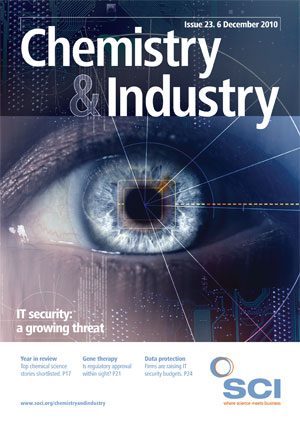Forensic officers searching crime scenes for tell-tale specks of blood that prove a violent crime has taken place could one day have infrared goggles that can quickly visualise them. Infrared visualisation would mean that there would be no need to spray the crime scene with copious amounts of chemical reagents, such as Luminol, which can potentially destroy minute amounts of DNA that could be valuable to detectives.
The US team at the University of South Carolina (USC) started investigating infrared spectroscopy technology because of its ability to pick out different chemical bonds. ‘As spectroscopers we were aware that the amide groups and the peptide groups [in blood] were capable of absorbing light at specific wavelengths in the infrared,’ says Stephen Morgan, a professor of chemistry and biochemistry at USC, who led the team.
‘Most people are familiar with the idea that an object of a certain colour, for example green, absorbs light in its complementary colour red, but many people aren’t aware thatcolours absorbed are a function of the chemical molecules present,’ explains Morgan. ‘Our particular design is put together to provide a response that is related to the chemical nature of the surface from which the light is reflected.’
The blood detection technology makes use of a hot plate to generate infrared radiation across a broad spectrum and a 320 x 240 pixel infrared camera to interpret the results. The image generated by the camera can be processed pixel-bypixel to remove background sources of infrared radiation to provide an image of blood stains. The image can be further improved using a filter impregnated with blood albumen as this appears to be the component of blood most responsible for the infrared ‘fingerprint’ of blood (Analytical Chemistry, doi: 10.1021/ac101109w). Tests with fabrics stained with bleach, rust, cherry soda and coffee have demonstrated that the infrared technique can distinguish between different organic compounds and blood. The researchers now plan further validation tests and caution that it is still some way off being the latest weapon in forensic scientists’ armoury.
Morgan says that they are in the process of patenting the technology and are searching for business partners. He adds that it should be possible to produce a portable device for around $5000–10,000 – a reasonable cost as other forensic equipment that complements Luminol can cost as much as $20,000.





